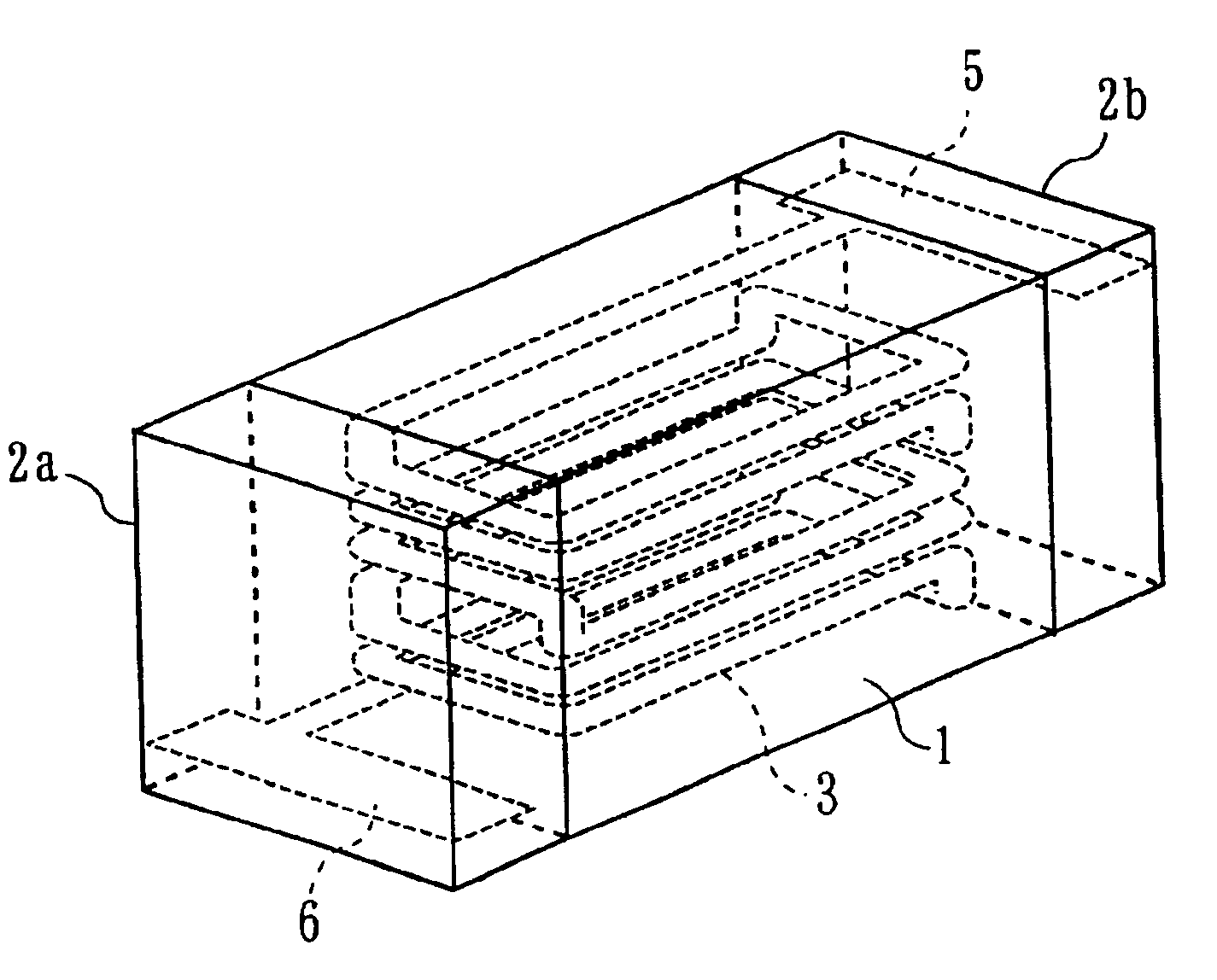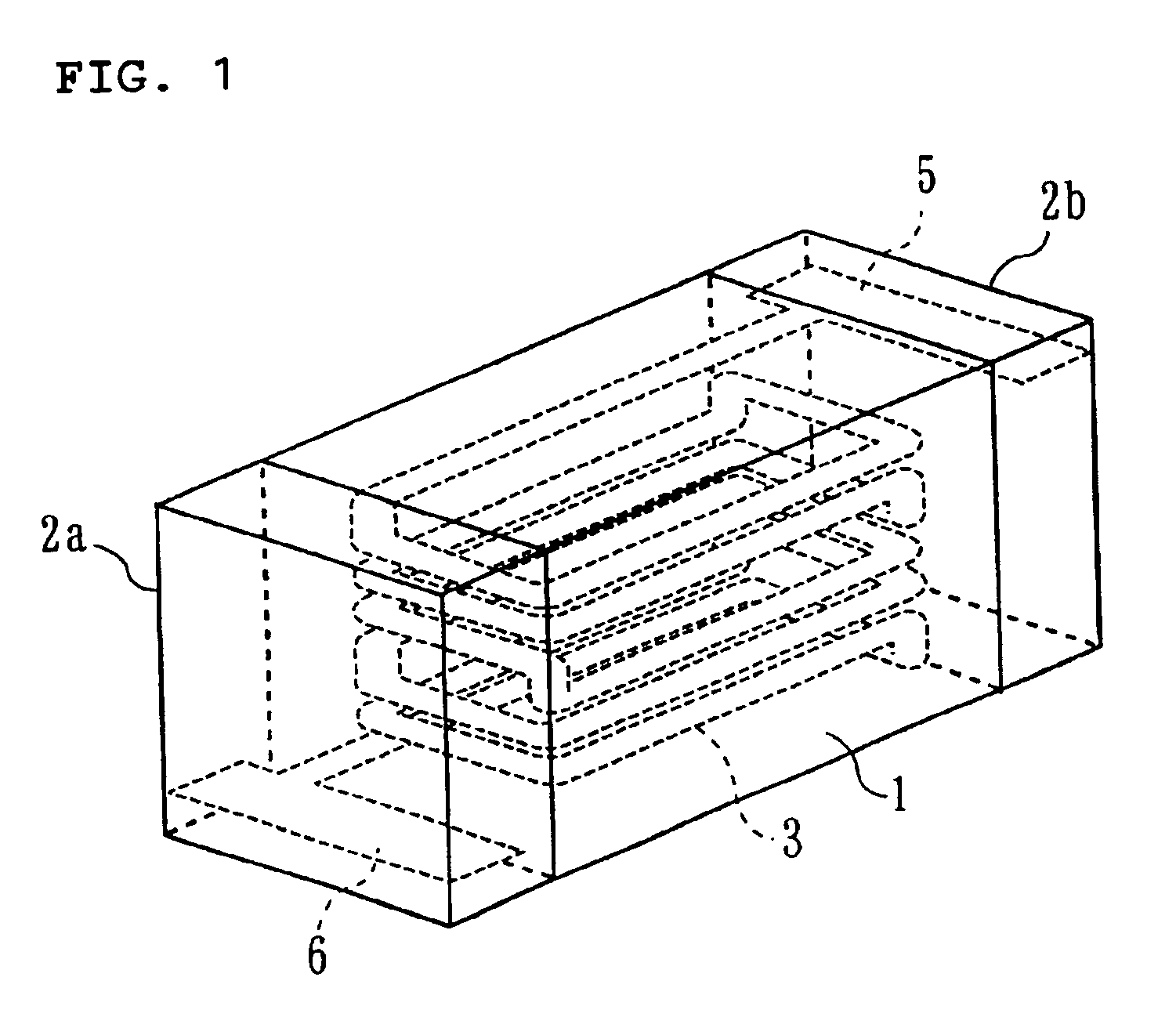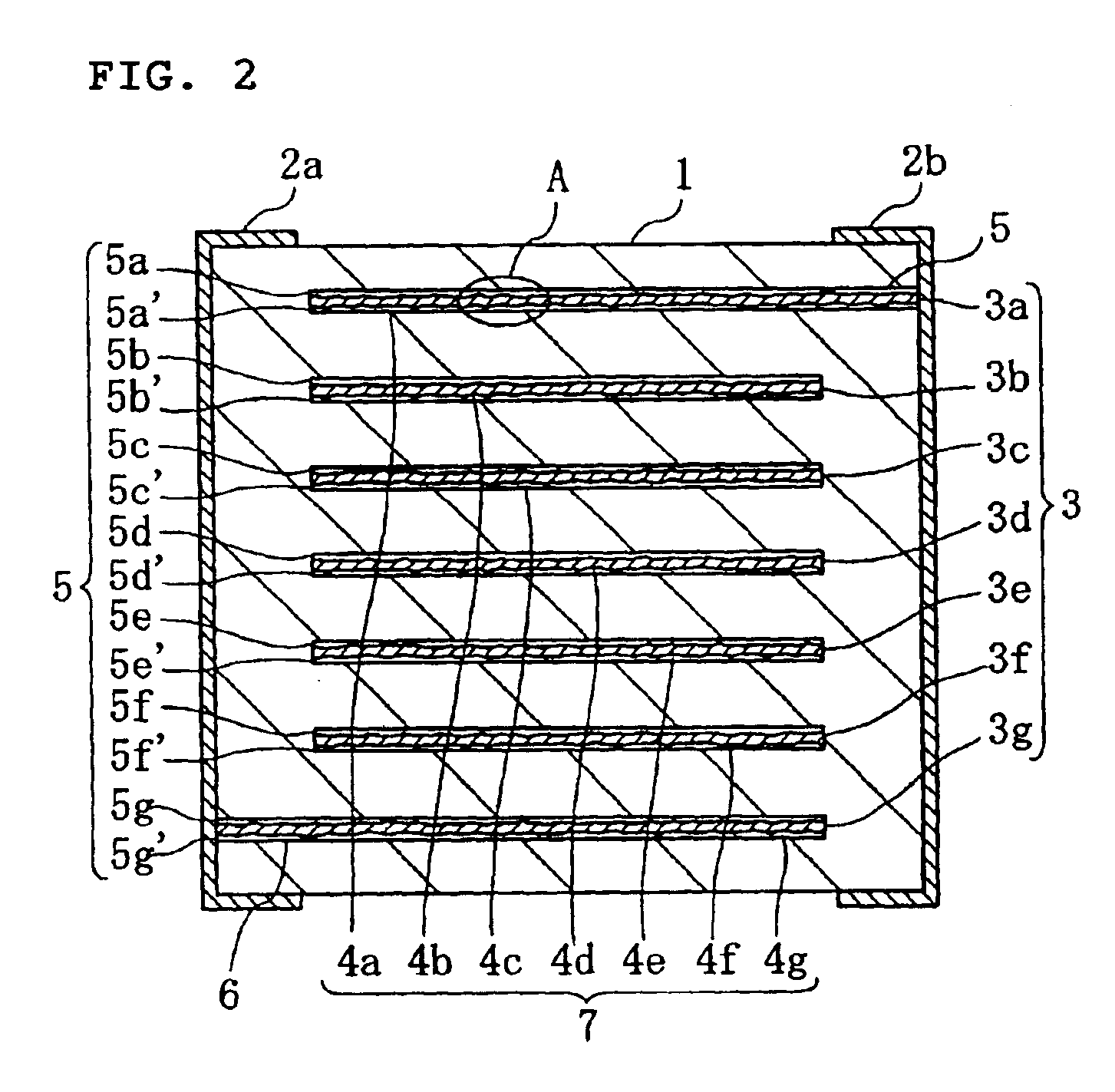Method for manufacturing laminated multilayer electronic components
a multi-layer electronic component and manufacturing method technology, applied in the direction of metallic pattern materials, non-conductive materials with dispersed conductive materials, inductances, etc., can solve the disadvantageous affecting the electrical properties of electronic components, the increase of dc resistance, and the structural defects of laminates, etc., to achieve superior surge-proofing properties, high reliability, and high resistance to flux
- Summary
- Abstract
- Description
- Claims
- Application Information
AI Technical Summary
Benefits of technology
Problems solved by technology
Method used
Image
Examples
example 1
Predetermined amounts of ferrite type materials such as NiO, CuO, ZnO, Fe2O3, and other suitable material were weighed out. Thereafter, the weighed-out materials were placed into a ball mill containing PSZ (partially stabilized zirconia) with a diameter of about 1 mm as grinding media, wet-mixed, and ground to form a slurry-like powder. The slurry-like powder was separated from the PSZ, dried by means of a spray-drier, and calcined at a temperature of about 650° C. for 2 hours. Thus, a calcined material was produced.
Subsequently, the calcined material was placed into the ball mill again, sufficiently wet-ground, and dried by means of a spray-drier to form a calcined powder.
Subsequently, to the calcined material, polyvinylbutyral as a binder, dibutyl phthalate as a plasticizer, an ammonium polycarboxylate as a dispersant, and toluene and ethyl alcohol as solvents were added and mixed to prepare ceramic slurry. Then, the ceramic slurry was formed into a sheet by a doctor blade method....
example 2
A laminated inductor of Example 2 was-produced by the same manners and procedures as described in Example 1 except that in the conductive paste the amount of the Ag particles was about 20% by volume and the amount of the resin particles was about 20% by volume.
example 3
A laminated inductor of Example 3 was produced by the same manners and procedures as described in Example 1 except that in the conductive paste the amount of the Ag particles was about 26% by volume and the amount of the resin particles was about 14% by volume.
PUM
| Property | Measurement | Unit |
|---|---|---|
| particle size | aaaaa | aaaaa |
| particle size | aaaaa | aaaaa |
| particle size | aaaaa | aaaaa |
Abstract
Description
Claims
Application Information
 Login to View More
Login to View More - R&D
- Intellectual Property
- Life Sciences
- Materials
- Tech Scout
- Unparalleled Data Quality
- Higher Quality Content
- 60% Fewer Hallucinations
Browse by: Latest US Patents, China's latest patents, Technical Efficacy Thesaurus, Application Domain, Technology Topic, Popular Technical Reports.
© 2025 PatSnap. All rights reserved.Legal|Privacy policy|Modern Slavery Act Transparency Statement|Sitemap|About US| Contact US: help@patsnap.com



